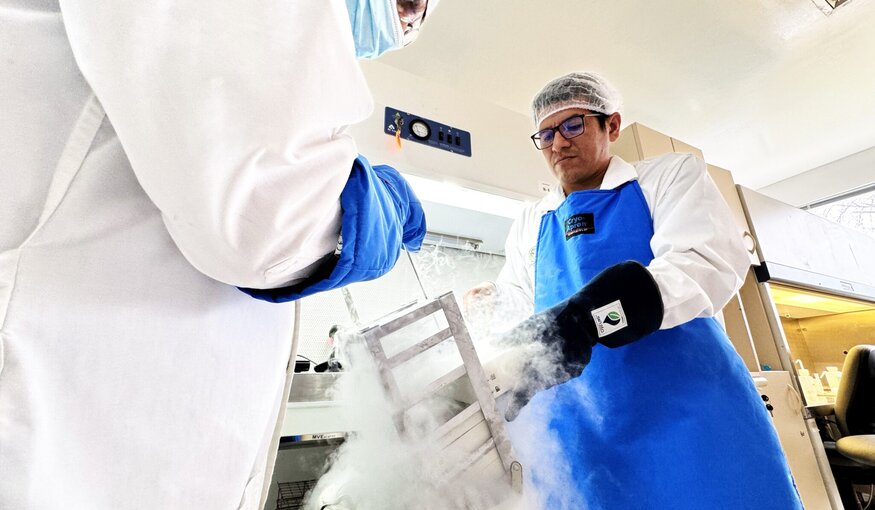CGIAR: Leave No Crops Behind - The Case for Cryopreservation

27 January 2025
The need for coordinated global action on the cryopreservation of crop diversity is clear, according to a recent article published by CGIAR. Cryopreservation is a technique used to conserve samples of plants that cannot be stored for the long term as seeds. These include potatoes, cassava, bananas, coconut, coffee and other crops that are either vegetatively propagated or have seeds that don’t survive being frozen. Cryopreservation uses ultra-low temperatures to store tissue samples for decades or even centuries.
With significant upfront investment, this offers a long-term solution to the risk of losing crop diversity in field and in vitro genebanks to climate change, conflict or pests and diseases. Currently, 100,000 samples of crop diversity may be at risk of being lost without using cryopreservation.
Fortunately, CGIAR genebanks are already using cryopreservation to safeguard crop diversity. CGIAR centers conserve hundreds of varieties of potato, sweetpotato, banana, cassava, and yam through cryopreservation.
“CGIAR and others have shown that it is possible to translate the science of cryopreservation into something tangible. The next step is to roll it out across the globe. If we forget about cryopreservation, in the long run it will be much more expensive to conserve these crops.” Stefan Schmitz, Executive Director of the Crop Trust
This article highlights the successes of two activities the Crop Trust has been involved in – The Sweetpotato Project funded by the UK Darwin Initiative and the cryobank at the International Potato Center (CIP) supported by GIZ.
Categories: For The Press, For Partners, The Sweetpotato Project, Food Security
